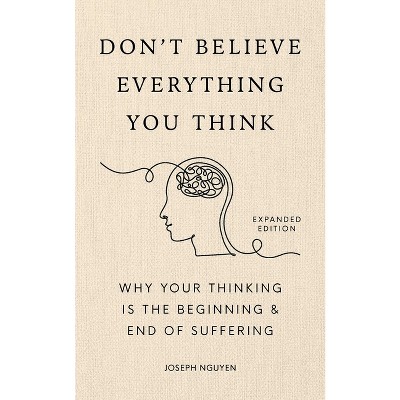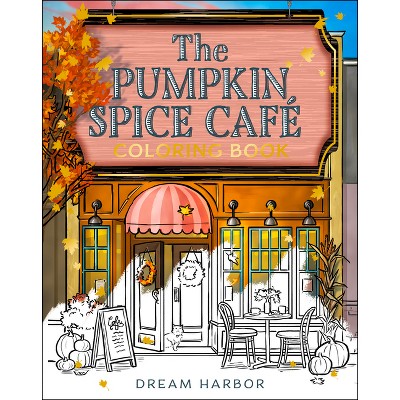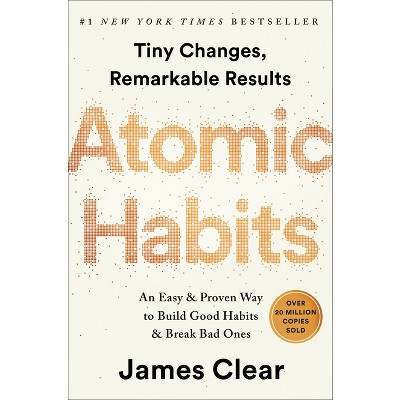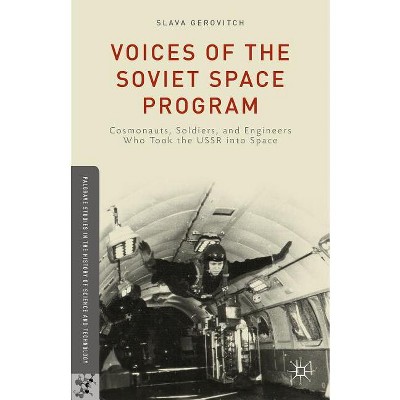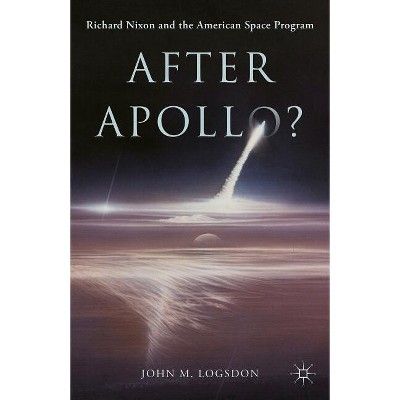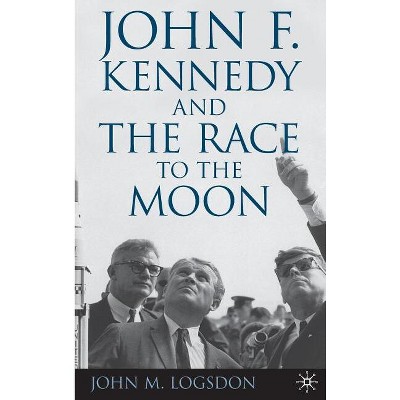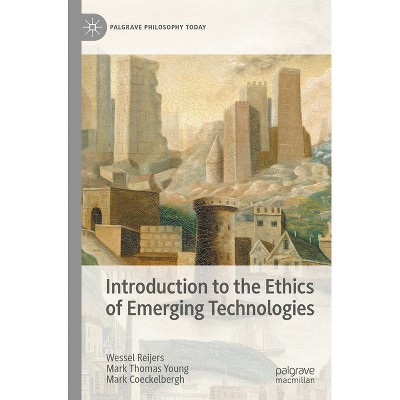Post-Industrial Landscape Scars - (Palgrave Studies in the History of Science and Technology) by A Storm (Hardcover)

About this item
Highlights
- About the Author: Anna Storm is a researcher in the History of Technology and Critical Heritage Studies at the Department of Human Geography, Stockholm University, Sweden.
- 227 Pages
- History, Historical Geography
- Series Name: Palgrave Studies in the History of Science and Technology
Description
From the Back Cover
Post-industrial landscape scars are traces of 20th century utopian visions of society; they relate to fear and resistance expressed by popular movements and to relations between industrial workers and those in power. The metaphor of the scar pinpoints the inherent ambiguity of memory work by signifying both positive and negative experiences, as well as the contemporary challenges of living with these physical and mental marks. In this book, Anna Storm explores post-industrial landscape scars caused by nuclear power production, mining, and iron and steel industry in Malmberget, Kiruna, Barsebäck and Avesta in Sweden; Ignalina and Visaginas/Snie?kus in Lithuania/former Soviet Union; and Duisburg in the Ruhr district of Germany. The scars are shaped by time and geographical scale; they carry the vestiges of life and work, of community spirit and hope, of betrayed dreams and repressive hierarchical structures. What is critical, Storm concludes, is the search for a legitimate politics of memory. The meanings of the scars must be acknowledged. Past and present experiences must be shared in order shape new understandings of old places.Review Quotes
"This valuable study of northern European industrial sites shows in detail how patriarchal capitalism both scarred and shaped community, and it explains how the transition to a post-industrial society has entailed the often ingenious reinvention of this heritage." - David E. Nye, Professor, Center for American Studies, University of Southern Denmark
"They are all around us mines and smelters, nuclear reactors, company towns, brownfields, and other industrial landscapes. Storm asks us to consider the communities that are integral parts of their past, present, and future. She takes us on an original and probing journey to consider the rise and fall of industrial sites, the scars they have created, and the contentious memories they engender as places of work and home, nostalgia, decay, and even rebirth as parks." - Paul Josephson, Professor of Russian and Soviet history, Colby College, USA
'Industrial ruins have traditionally been characterized as a blight, or a scar, on the landscape, and thus dismissed. The significance of industrial sites to social history, and to the experiences of class and labor, are often neglected. Storm addresses this lacuna and presents six richly textured case studies to identify the many differing, and often conflicting, layers of meaning that such sites may have. Storm draws attention to how industrial heritage can offer ways of acknowledging and reflecting on past injustices. In using the metaphor of scar as a process of healing, the book explores the ways in which industrial heritage offers a place from which societies can enter into discussion about the meaning of the past for the present' Laurajane Smith, Professor, Centre for Heritage and Museum Studies, The Australian National University"
"This valuable study of northern European industrial sites shows in detail how patriarchal capitalism both scarred and shaped community, and it explains how the transition to a post-industrial society has entailed the often ingenious reinvention of this heritage." - David E. Nye, Professor, Center for American Studies, University of Southern Denmark
"They are all around us mines and smelters, nuclear reactors, company towns, brownfields, and other industrial landscapes. Storm asks us to consider the communities that are integral parts of their past, present, and future. She takes us on an original and probing journey to consider the rise and fall of industrial sites, the scars they have created, and the contentious memories they engender as places of work and home, nostalgia, decay, and even rebirth as parks." - Paul Josephson, Professor of Russian and Soviet history, Colby College, USA
'Industrial ruins have traditionally been characterized as a blight, or a scar, on the landscape, and thus dismissed. The significance of industrial sites to social history, and to the experiences of class and labor, are often neglected. Storm addresses this lacuna and presents six richly textured case studies to identify the many differing, and often conflicting, layers of meaning that such sites may have. Storm draws attention to how industrial heritage can offer ways of acknowledging and reflecting on past injustices. In using the metaphor of scar as a process of healing, the book explores the ways in which industrial heritage offers a place from which societies can enter into discussion about the meaning of the past for the present' Laurajane Smith, Professor, Centre for Heritage and Museum Studies, The Australian National University
I'll start by saying that initially I was a bit confused by Anna Storm's project. I thought that perhaps this work was to be an American edition and perhaps a tweaking of her dissertation, already in print, titled Hope and Rust. But comparing Hope and Rust to the full description of the new book made it clear to me that Landscape Scars will be a very different work.For starters, let me say that Anna Storm is highly qualified to write the book. She is very knowledgeable within the area of industrial heritage/industrial culture, especially as it is practiced in Europe. She is very active in her field and is known on both sides of the Atlantic. Relatively few persons (especially younger scholars) would be as qualified to write a book such as Landscape Scars.
One of the strengths of the proposal is that it is timely and deals with something that is relatively new (especially in the United States): industrial heritage. If you look at the list of competing or complementary titles (which is a good list), the publication dates are 2005, 2007, and 2009. Her proposed work comes at a time when interest in industrial heritage sites and practices is on the upswing. It also seems to fit nicely into the publisher's series, Palgrave Studies in the History of Science and Technology.
Another strength is that besides 'theorizing' about heritage sites, the proposed book will actually present or study a number of them, and they are quite diverse, not only in terms of time but in terms of industry. Any number of heritage studies examine Ironbridge or the Ruhr, but few would tackle nuclear power plants. I see that as a strength of this proposal.
While I support the book, at the same time I want to make some remarks (hopefully constructive ones) about how to improve it, including enlarging its market niche.
As it now stands, the book is very strong on European industrial heritage, on European scars, but less strong on American examples. The Palgrave Studies are intended to be international, which is well and good, but I think that to attract a broader readership in the US, the proposed book should include more material drawn from this side of the Atlantic. In short, the author should stretch her expertise a bit. Americans may be versed in industrial history, industrial archaeology, heritage studies or historic preservation, but even those with these interests are relatively little experienced in European industrial heritage. The author can use this book to draw them in, and to do so, looking at more American sites or 'scars' would help. The US might be ripe for this. If you take industrial Detroit for an example, a wounded place if there ever was one, in 2010-11 at least three major photographic books came out documenting the city's decline, and at the same time showing and writing about the dignity, majesty, and compelling imagery of its Packard auto plant, Michigan Central terminal, and many other sites. (Moore, Detroit Disassembled; Marchant, The Ruins of Detroit; and Taubman, Detroit:138 Square Miles.) It seems to me that to publish in the US and not do more with sites in the US would be a missed opportunity.
In terms of drawing in readers, I would urge the author to adopt a livelier prose style, one that is more simple, direct, and concise. The two chapters I read, plus the proposal, suffered more than a bit from 'round-about' writing. I have had to reread many passages after asking myself, 'What does that mean ' If the author herself cannot simplify her language to make her points in a straight-forward manner, then she will hopefully be willing to work with a good copy editor who can clean things up.
The proposed book may indeed appeal to a scholarly audience drawn from a range of disciplines, such as various historical fields, heritage studies, museum studies, and so on. But not all will be equally conversant with what heritage means, or memory, or other 'buzz words' that insiders use. The author is very comfortable, maybe too comfortable, writing of 'cultural tools for memory work, ' 'evocative memory trigger[s], ' 'beautiful sign[s] of resistance and reconciliation, ' and 'scars of silence and absence.' But professionals in adjacent fields - potential readers - may well not write or think like this, or know what these words mean. You can call me an industrial archaeologist, an historian of technology, or a student of material culture but in all my experience, no industrial site I've ever studied, and there have been many, has never 'whispered' to me. The author should keep a broad audience in mind when choosing words in her text and make sure to avoid them if they are too metaphorical, or explain them when that would prove useful. (Personally, I would not mind if the metaphorical use of words such as wound, scar, and healing were toned down or used less frequently.) Heritage studies, history, material culture studies and so on each tends to have a language of its own. The manuscript should try to reach the broadest audience possible, including, one supposes, architects, landscape architects, and planners.
Regarding this business about wounds becoming scars: just HOW does it happen? Who plans it? Who pays for it? How do they handle environmental hazard issues? Insurance issues? Restoration and integrity issues? Could the industrial heritage/industrial culture projects found in Europe ever be paralleled in the United States? (I think not, actually.) What economic and political structures and what cultural values make this 'healing' business actually possible in some places and not in others?
"
"This valuable study of northern European industrial sites shows in detail how patriarchal capitalism both scarred and shaped community, and it explains how the transition to a post-industrial society has entailed the often ingenious reinvention of this heritage." - David E. Nye, Professor, Center for American Studies, University of Southern Denmark
"They are all around us mines and smelters, nuclear reactors, company towns, brownfields, and other industrial landscapes. Storm asks us to consider the communities that are integral parts of their past, present, and future. She takes us on an original and probing journey to consider the rise and fall of industrial sites, the scars they have created, and the contentious memories they engender as places of work and home, nostalgia, decay, and even rebirth as parks." - Paul Josephson, Professor of Russian and Soviet history, Colby College, USA
'Industrial ruins have traditionally been characterized as a blight, or a scar, on the landscape, and thus dismissed. The significance of industrial sites to social history, and to the experiences of class and labor, are often neglected. Storm addresses this lacuna and presents six richly textured case studies to identify the many differing, and often conflicting, layers of meaning that such sites may have. Storm draws attention to how industrial heritage can offer ways of acknowledging and reflecting on past injustices. In using the metaphor of scar as a process of healing, the book explores the ways in which industrial heritage offers a place from which societies can enter into discussion about the meaning of the past for the present' Laurajane Smith, Professor, Centre for Heritage and Museum Studies, The Australian National University
About the Author
Anna Storm is a researcher in the History of Technology and Critical Heritage Studies at the Department of Human Geography, Stockholm University, Sweden. She has been awarded the Joan Cahalin Robinson Prize (2006), the ICOHTEC Publication Prize for Young Scholars (2009) and the Marie Nisser Scholarship (2012).Shipping details
Return details
Trending Non-Fiction

